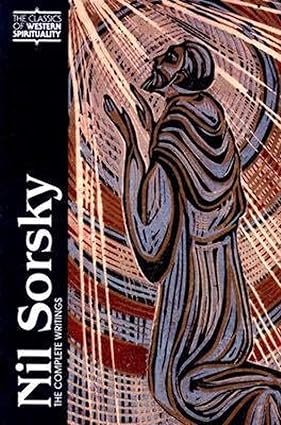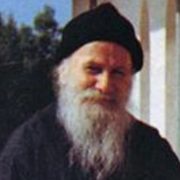Sometimes people ask me what is distinctive about Eastern Orthodox spirituality. The question is a difficult one. Many Roman Catholics I’ve talked to assume that Orthodoxy is simply Catholicism without the Filioque and Papacy. For many evangelicals, especially those with roots in revivalism or Baptist theology, what seems to distinguish Orthodoxy is its ritualism and sacerdotalism. Many Protestant converts to Orthodoxy (at least, among those I’ve interacted with) think that what sets our tradition apart is unchanging continuity with the early church (an idea that, I explain elsewhere, is spurious), or antipathy to anything Western.
Eastern Orthodox spirituality does have a distinctive “vibe,” with certain emphases that, though not explicitly denied in other traditions, are nevertheless muted. (And, as a member of a Western Rite Orthodox Church, I would argue that the reverse is also true but in a less significant sense, though that is not the topic of this article.) While we can certainly point to certain beliefs and practices that set Eastern Christianity apart from Latin Catholicism and its Protestant progeny (for example, practices like paedocommunion, baptism by immersion, communion from one cup, the practice of the Jesus Prayer, etc.) we may still want to ask if there are more basic spiritual distinctives or principles undergirding these practices. To phrase the question differently, is there something beyond ecclesiological and jurisdictional unity that Greek Orthodox spirituality shares in common with Russian Orthodoxy, Antiochian Orthodoxy, Romanian Orthodoxy, etc.? I believe there is, but articulating those emphases has always been difficult for me, not least because I only started to understand Eastern Christianity myself after years of involvement in the Orthodox church, submitting to its rhythms, visiting monasteries, participating in the sacramental life, etc. It is also difficult because spiritual experience, being elusive to reduction, cannot be distilled to a single principle.
Rather than taking a reductive approach, I would suggest that the distinctives of Eastern Christianity have the character of “family resemblances.” The Wikipedia’s entry on the topic explains that family resemblances are “things which could be thought to be connected by one essential common feature may in fact be connected by a series of overlapping similarities, where no one feature is common to all of the things.” Just because family resemblances can’t be reduced to one essential common feature doesn’t mean they can’t be articulated. Yet sometimes the articulation can prove difficult. One reason for such a difficulty in the present case is that many converts to Eastern Orthodoxy, sensing there is a difference between Eastern spirituality and the Western traditions in which they grew up, will misdiagnose the problem and develop a grand anti-western mythology that would have been as unrecognizable to St. Gregory Palamas as it would have been to Thomas Aquinas.
So imagine my delight when, in the course of my reading, I came across a passage in a book that did successfully articulate the distinctives of Eastern Christianity, putting into words these family resemblances. Ironically, the passage I am about to share was written by a Catholic. That might seem strange, but it actually makes sense. I have found that sometimes the people who can best articulate the distinctives of Eastern Christian spirituality are Eastern Catholics, members of various Byzantine rite groups in communion with Rome, whether Greek Catholics, Armenian Catholic, Melkites, Maronites, etc. Members of these groups are part of communities that typically have living continuity with Eastern Orthodox spirituality and yet—through the accidents of history, geography and politics—have come under the jurisdiction of Rome while still maintaining their traditions and eastern heritage. Because Eastern Catholics often have familiarity with mainstream Catholicism, sometimes attending the latter for years if an Eastern church is not available, they find themselves in a unique position to recognize (and occasionally articulate) the elusive “something” that sets Eastern Orthodoxy apart (though Eastern Catholics typically don’t refer to this tradition as “Orthodoxy,” but as “Eastern spirituality” or “hesychasm”).
John L. Mina is one such Eastern Catholic. Coming from a family of Eastern European immigrants, he is part of the Ruthenian Byzantine Catholic Archdiocese of Pittsburgh. His academic interests have been in Russian literature and spirituality, and he has written scholarly work about Russian Orthodox saints. So he is quite immersed in Eastern spirituality. But he has also studied at the Jesuits Pontifical Gregorian University and Oriental Institute in Rome, and is familiar with the practices and distinctives of the Latin rite. This intimate acquaintance with both Western and Eastern traditions puts him in a unique position to articulate what it is that sets Eastern spirituality (what he calls the hesychast tradition) apart. Without further ado, here is what he says, from his Preface to Nil Sorsky: The Complete Writings:
At the basis of hesychasm there lay an intense belief in the nearness of the sacred, a mystical realism that stressed the ineffable, all-upholding, and transforming self-manifestation of God, who is Love, and who pours forth his divine, life-creating energies on all through his Holy Spirit. Those who rightly seek him become completely filled with the uncreated light that shone forth from Christ at his Transfiguration on Mount Tabor. This light is a sign and result of theosis or deification: the becoming ever more perfectly in the image and likeness of the Heavenly Father. To attain this, that is, to refurbish the divine mirror in himself, man must undertake an arduous journey of self-knowledge and self-mastery, overcome his passions, and become whole again. This process is rooted not in man’s willfulness, but in growing ever nearer to Christ, who conquered sin and death by uniting Divinity to humanity, divine will with human will, in perfect and complete symphony. Stillness (hesychia), inner beauty, and a quiet joy are the fruits of constantly turning one’s mind inward, communing in one’s innermost heart with the Savior through the continuous, purifying repetition of the divine Name, and accruing ever more his Holy Spirit. The hesychast, however, is not an escapist, even if he must withdraw for a while into solitude in order to find himself. The true hesychast, through his prayer, consolation, work, and art, radiates inner stillness, beauty, and joy throughout a vain and disordered world. His work is always one of restoration, not rejection. Thus the great insight of Byzantine theology, going back to Maximus the Confessor, that nature presupposes grace and beauty manifests God is brought to full realization in the profoundly personal, but never atomistic, hesychast religious praxis. It produces an intensely religious world view. This is very different from the sterner Western view of autonomous, albeit depraved, nature always opposing grace, a view that helped open the way to extreme nominalism and eventually to the secularism of the Renaissance.
I don’t know if what he says about the Renaissance is correct. I don’t deny that ideas have consequences, but I tend to be suspicious of theories of history that see ideas as the driving force. But don’t let that distract you, because this is an awesome summary of what sets Eastern Orthodoxy apart.



